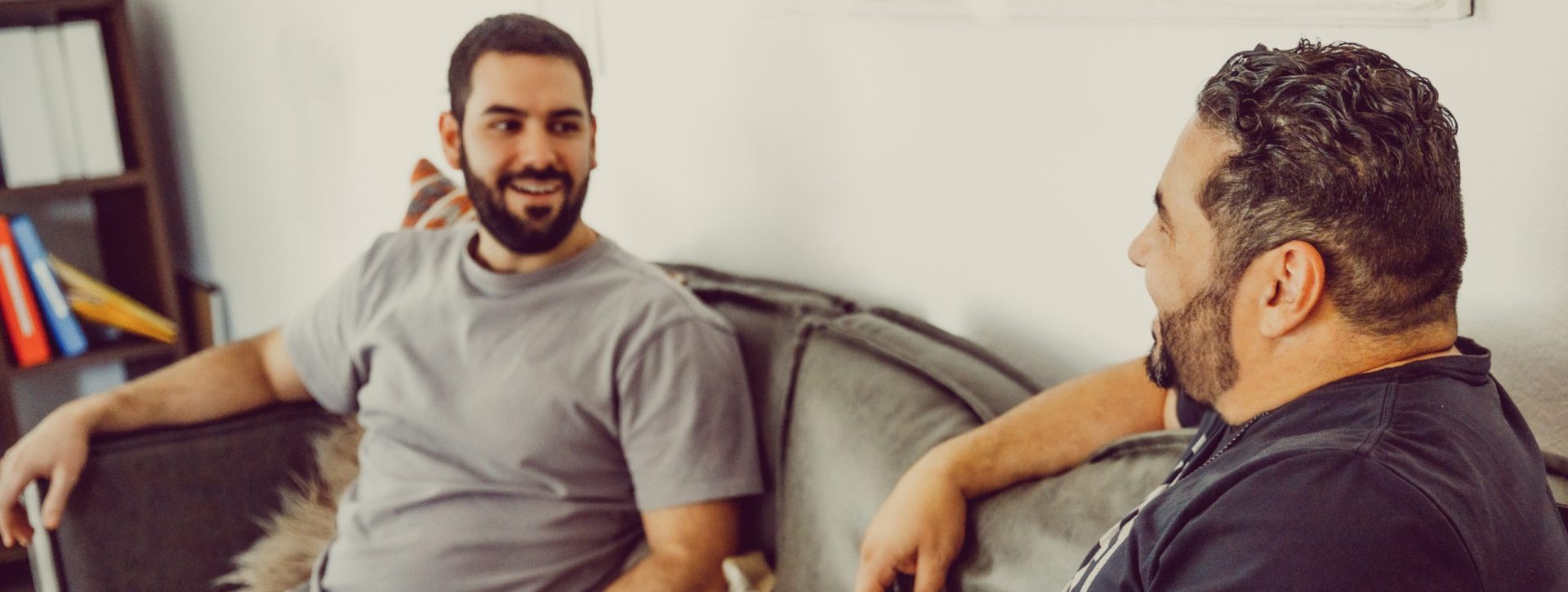
As the number of Americans struggling with drug and alcohol dependency soars, it’s critical for people with addictions to find effective ways to break their dependence on substances. Cognitive behavioral therapy is one of the tools you can use to replace your substance use with healthy alternatives.
Diamond House Detox offers cognitive behavioral therapy sessions to residents of our strong community detox center in Sacramento, California. We encourage you to learn more about our treatment options and how a stay at our luxury facility or visits to our outpatient center can help you find the freedom you’re looking for.



Cognitive Behavioral Therapy (CBT) is a well-tested specialized type of psychotherapy shown to be effective for certain types of psychiatric illness – including substance abuse. According to the theory behind CBT, the behaviors, feelings, and thoughts of an individual are very closely linked. The ultimate goal of CBT is to control and change linked patterns of thinking, actions and feelings.
During CBT sessions, clients are encouraged to examine and identify their maladaptive thoughts and then use logic and data to find more realistic thinking patterns. Clients are encouraged, through various skills, to adopt more realistic and flexible ways of thinking about themselves and the world. Individuals are encouraged to engage in activities that will create a sense of competence and enjoyment in their daily activities. By thinking more accurately about yourself, your abilities and the world around you, you can view life more clearly and respond to situations more effectively. Many people turn to drugs when they feel upset or overwhelmed, but CBT can help you depend less on substances by finding different ways to live a fulfilling life.
Modern cognitive therapy has had a couple of precursors in other cognitive psychotherapies throughout the past several decades.
This form of psychotherapy had its beginnings in the late 1950s with the psychoanalyst Albert Ellis. Rational emotive behavior therapy (REBT) posited that people could resolve their emotional and behavioral issues by changing their irrational beliefs to more rational ones. Clients could accomplish these changes by identifying their irrational beliefs and then testing them — and hopefully disproving them to themselves — in the real world.
Ellis thought that we all have a unique set of assumptions about ourselves and the world by which we navigate our lives. But for some people, these assumptions do not line up with reality. So the goal of REBT was to help people test their assumptions against reality so they would be able to assess the truth of their beliefs and begin to guide their behavior with more rational thoughts.
For example, a person might strive to make a sports team, fail in the attempt, and then feel depressed because his underlying assumptions told him he had no worth as a person except through his achievements. REBT could help him to see that this self-assessment was not based in reality and help him begin to view the failure as an ordinary setback rather than a catastrophe.
In the late 1960s, Albert Beck built on Ellis’s work to develop the system of cognitive therapy that would become part of the basis for today’s cognitive behavioral therapy. Cognitive therapy was similar to REBT in many ways but had a few key differences:
Today’s cognitive behavior therapy incorporates more elements of behaviorism, focusing on changing behaviors along with changing thoughts and perceptions.
It’s easy for the human mind to develop maladaptive ways of thinking about and coping with our external environment. Cognitive behavioral therapy works by helping people become aware of their inaccurate negative thinking. From there, they can change the thought patterns that underly their behavior. These altered thought patterns can often then lead to altered behavior. This is because changing their assumptions about the world helps them see challenges from a more objective viewpoint and respond more appropriately to stressful situations.
This process can take some time. Throughout your sessions, your therapist will focus on identifying your current thought patterns and shaping them into a more productive framework to support your behavior and lead to more healthy behavior.
Cognitive behavioral therapy differs from other forms of “talk” therapy in the sense that it involves more than working through your feelings about your daily life and past experiences. It is more structured, offering specific exercises to help you retrain your thoughts, assumptions and behaviors.



During the first session, the therapist typically conducts an assessment to learn more about you. The therapist will ask about your medical history, psychological history, and probably also your personal, family and educational details. These questions help the therapist get to know more about you and understand the background of the issues you are seeking treatment for. The therapist is also likely to ask about current issues affecting your life.
During subsequent sessions, you and your cognitive therapist will focus on particular strategies for changing your patterns of thinking and behavior using cognitive behavioral therapy techniques. Your therapist may have you perform exercises to identify your patterns of thinking and then work to change the habits that are not working for you. Or your therapist may ask you questions about your thoughts or assumptions and challenge you to figure out whether the beliefs that underly your behavior are true. Your therapist may also encourage you to try out a new perspective for your session or engage in new behaviors after you leave and see how these changes work for you.
Cognitive therapy is usually intended to work over a limited number of sessions, often somewhere between five and 20. So cognitive behavioral therapy is a short-term rather than a long-term strategy. But the length of a client’s time in therapy can vary from a few days to a few years. Some of the factors that help determine the length of your treatment include the following:
You can talk to your therapist in more detail to figure out a plan that’s right for you.
One other factor that will help determine the length of treatment is having specific therapy goals. Maybe you want to be able to take a more direct, less avoidant approach to personal relationships, or you want to be able to find jobs that challenge you and help you grow rather than falling back on safe standbys because you fear failure. Perhaps you want to train your mind to turn to healthier coping mechanisms rather than substance abuse or other addictive behaviors. Determining the goals of your specific therapy plan will help shape the lifespan of your treatment.
CBT therapists offer many skills that you can use to recognize your triggers and find healthy ways to deal with your emotions. As a result, many therapists across the globe use it to treat nearly any type of addiction. Using cognitive behavioral therapy, you and your therapist can manage your substance abuse by:



Many therapists use CBT to treat clients with depression, anxiety disorders, post-traumatic stress disorder (PTSD), eating disorders and other types of mental health conditions. However, unlike with some other types of therapy, nearly anyone can benefit from the treatment. CBT is not specific to those who have been through trauma — you can use it to address a wide variety of life challenges such as these:
Generally, very few risks are associated with cognitive behavioral therapy. Medication such as antidepressants can leave clients with side effects like nausea, fatigue, weight gain, insomnia, blurred vision and more. But cognitive behavioral therapy is free from these side effects. So clients can come into it knowing they are not risking unwelcome changes to their physical health.
However, this fact does not mean cognitive behavioral therapy will make you feel better instantly. At certain points during cognitive behavioral therapy, you may feel uncertain or uncomfortable. Changing your patterns of thinking and behaviors is hard work, and some of the underlying assumptions and feelings you have to confront may not be easy to deal with.
Sometimes, clients may cry, become angry or feel exhausted during or after a cognitive behavioral therapy session. If you engage in exposure therapy, a type of cognitive therapy that requires you to confront the situations you would usually try to avoid, you may experience a temporary increase in feelings of stress and anxiety. Fortunately, a trained therapist is familiar with handling these scenarios safely and constructively. Your therapist can offer you tips on how to navigate the thoughts and feelings that come up during therapy.
If you’d like to improve your well-being and break free from addiction, turn to the professionals at Diamond House Detox. We welcome guests throughout northern California into our home for cognitive behavioral therapy sessions and other individualized inpatient and outpatient services aimed at your addiction recovery.
When you need cognitive behavioral therapy in Sacramento, California, and beyond, we’re here to help. Contact us to learn more about finding hope and healing through our alcohol and drug detox services.
Contact Us